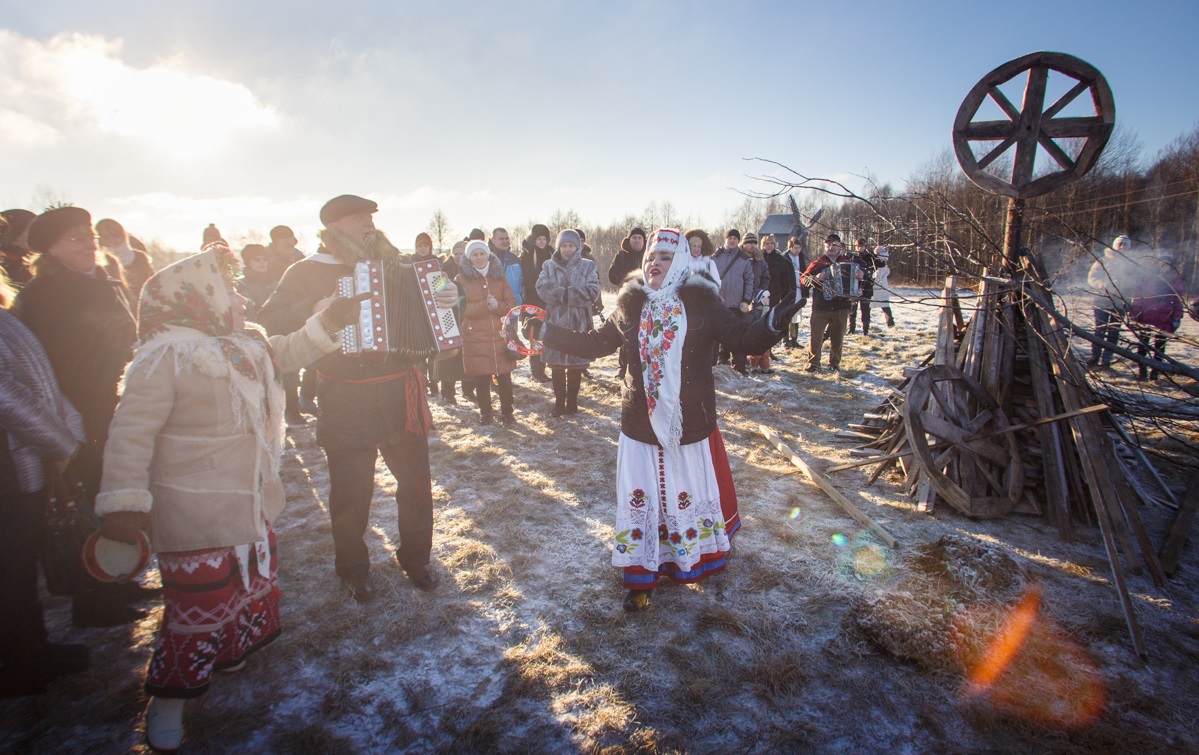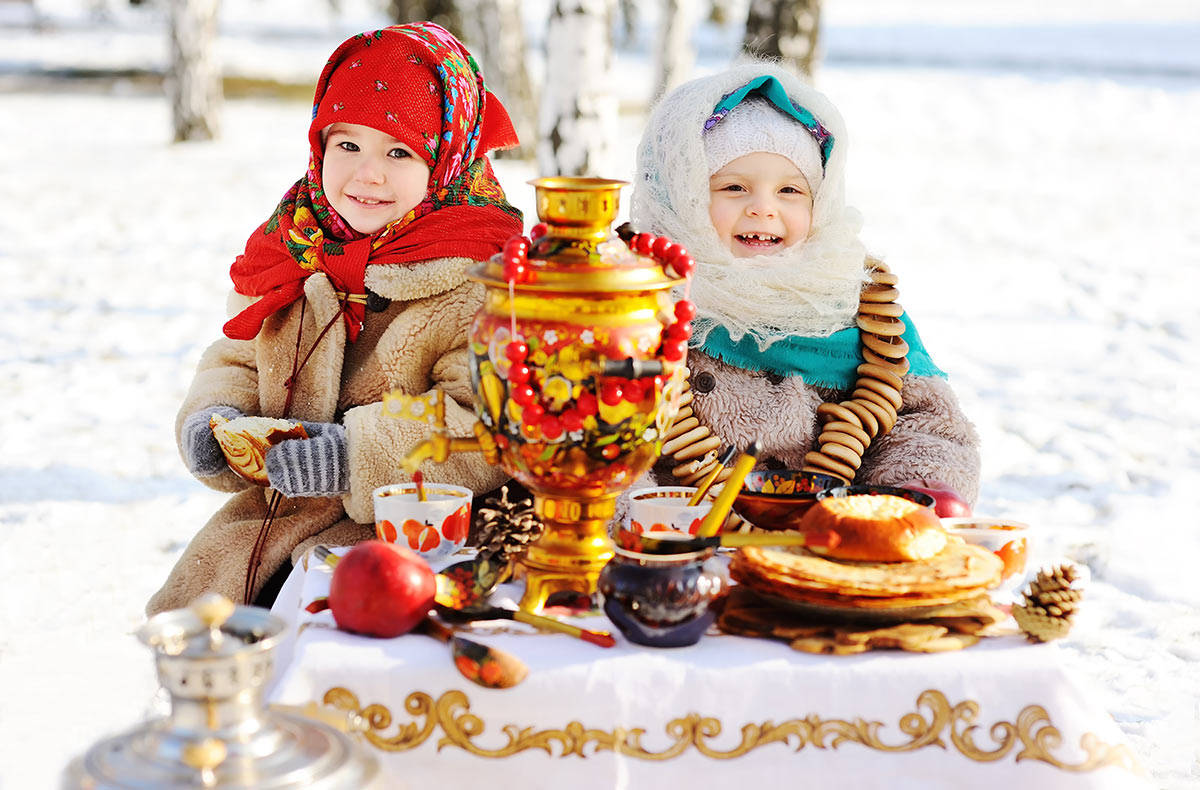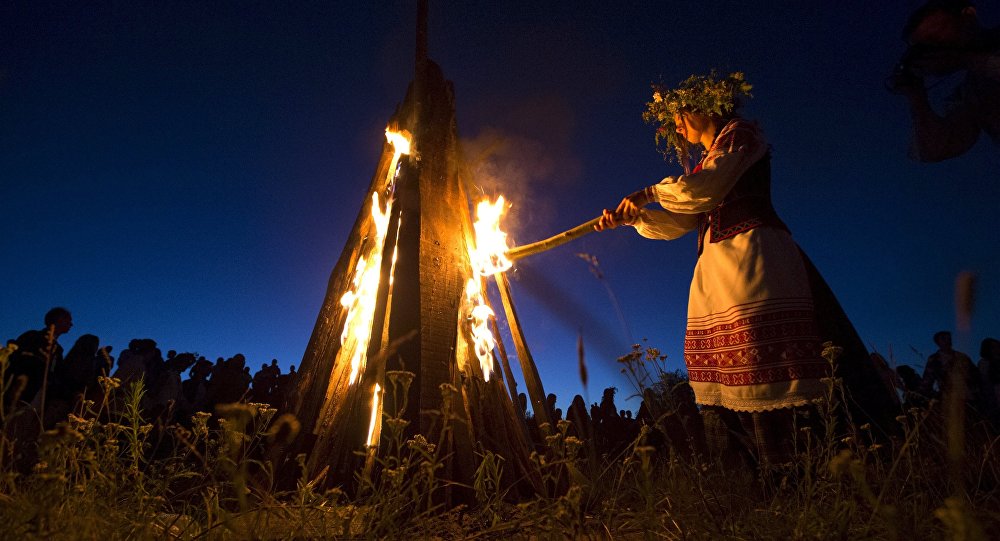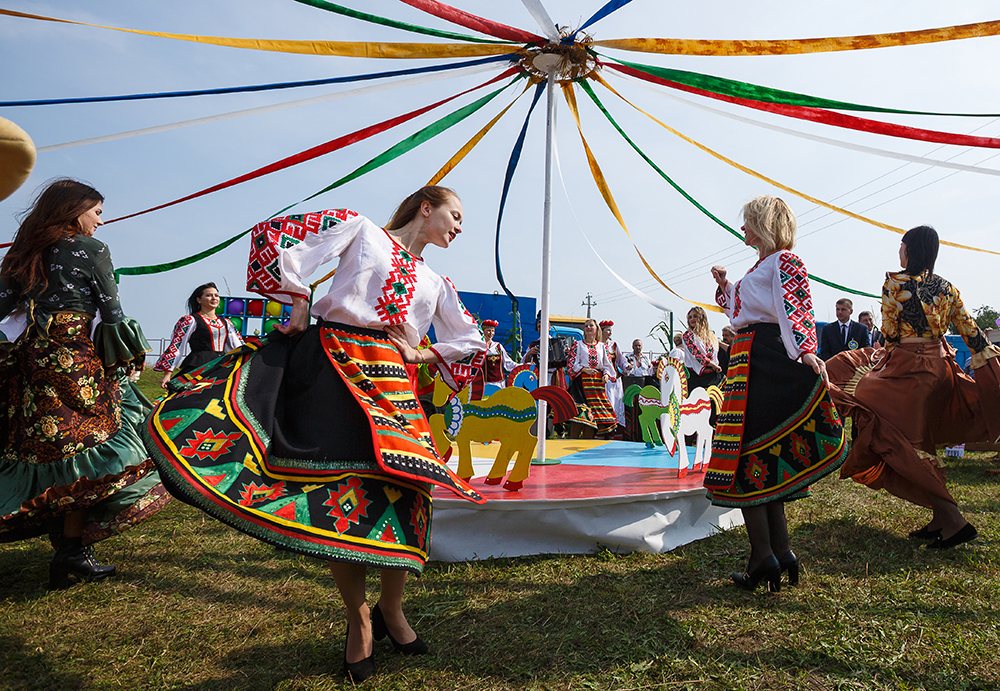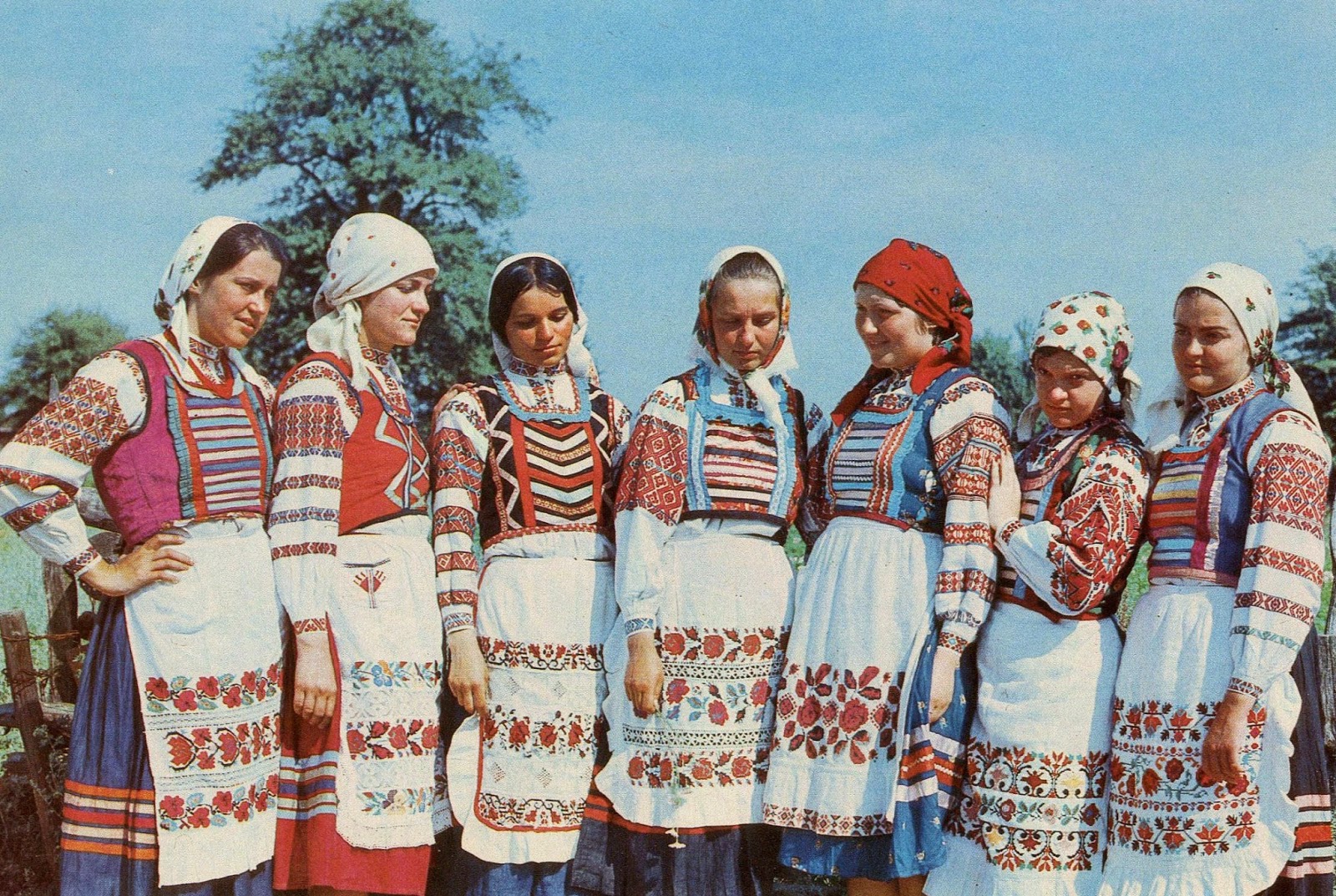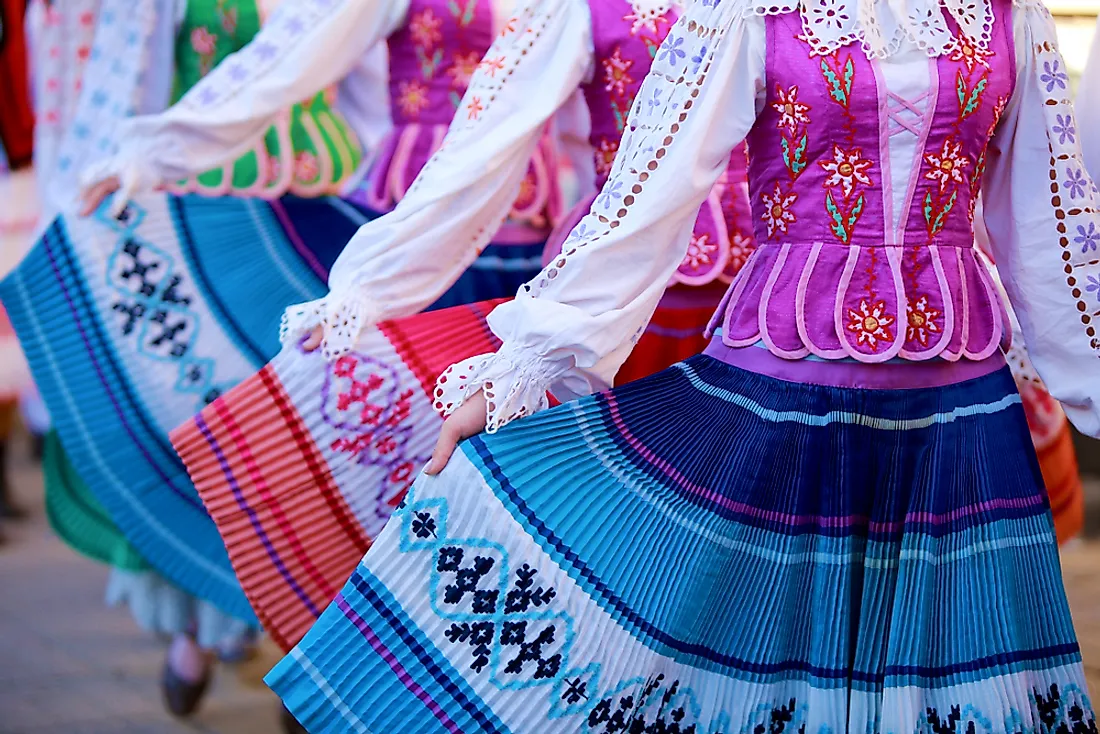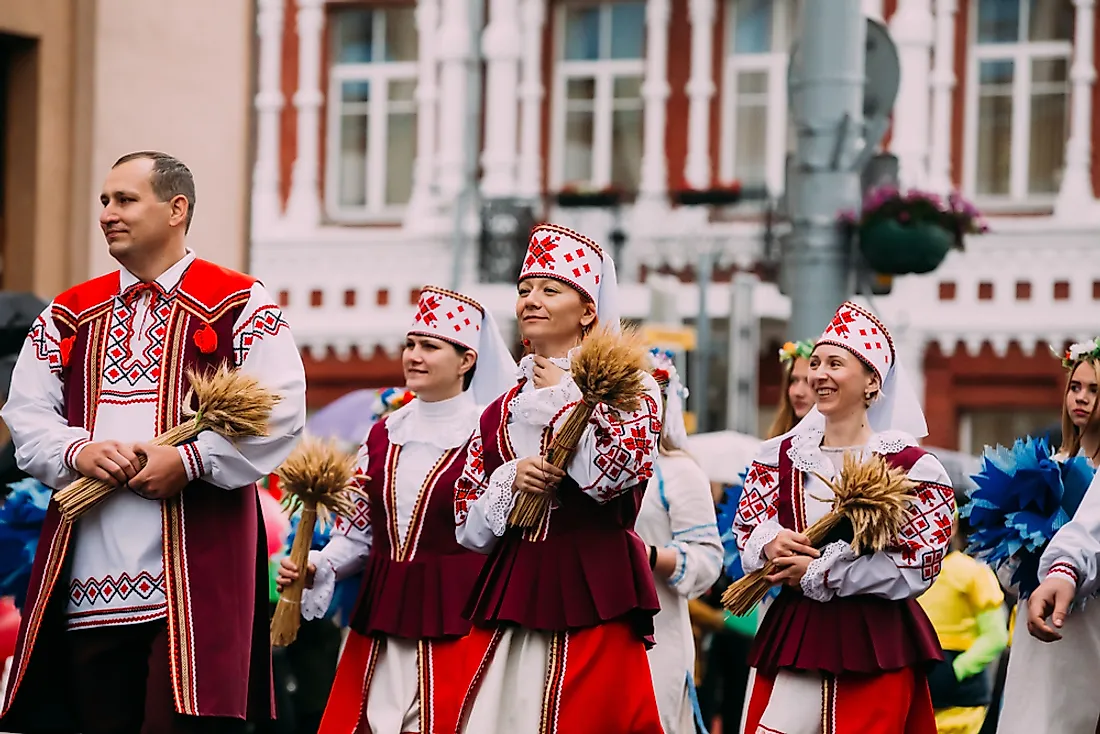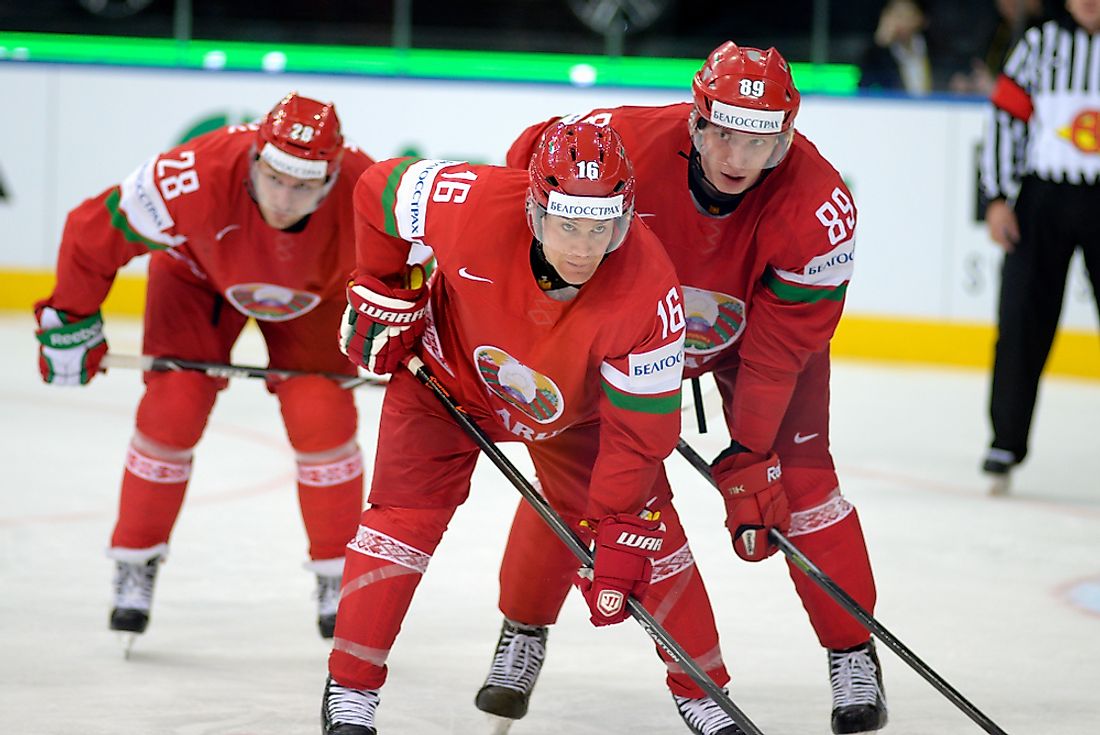Семейные традиции в беларуси на английском языке с переводом
Традиции и обычай в Белоруссии на английском языке (желательно с переводом)
Belarus is known by its Russian name Belorussia. The official languages of Belarus are Belarusian and Russian. Belarusian eating habits are not very different from those of people in other Eastern European cultures. They usually have three main meals. Belarusian meals consist of many traditional dishes, such as sausages, thick potato pancakes, cold sorrel soup.
National costumes are very popular among in Belarusian people but they wear the traditional clothes only when it is a traditional day. Their main winter fest is Koliady. This festival symbolizes the beginning of the New Year. There are also many other festivals, but among them the lightest are Belarusian wedding and christening. Those ceremonies have a deep sense among the Belarusian people and they prepare for these events beforehand.
There are many traditional crafts in Belarus such as weaving woodworking, glass blowing and many others. Among the Belarus’s traditions the most popular are Shrovetide and Koliady.
Белоруссия известна своим русским названием «Белоруссия». Официальными языками Беларуси являются белорусский и русский. Белорусские привычки питания не очень отличаются от привычек людей в других восточноевропейских культурах. У них обычно есть три основных приема пищи. Белорусские блюда состоят из многих традиционных блюд, таких как колбасы, толстые картофельные блины, холодный щавельный суп.
Национальные костюмы очень популярны среди белорусских людей, но они носят традиционную одежду только в традиционный или праздничный день. Их главным зимним праздником является Калиади. Этот фестиваль символизирует начало Нового года. Есть также много других фестивалей, но среди них самыми светлыми являются белорусская свадьба и крещение. Эти церемонии имеют глубокий смысл среди белорусского народа и заранее готовятся к этим событиям.
Там много традиционных ремесел в Беларуси, таких как ткачество деревообработки, выдувание стекла и многие другие. Среди белорусских традиций самыми популярными являются Масленица, Купалье и Коляда.
Традиции и обычай в Белоруссии на английском языке желательно с переводом.
Vashurok. ru
26.02.2017 0:09:58
2017-02-26 00:09:58
Источники:
Https://vashurok. ru/questions/traditsii-i-obichay-v-belorussii-na-angliyskom-yazike-zhelatelno-s-perevodom
Сочинение (топик) Традиции моей семьи на английском языке с переводом текста на русский язык » /> » /> .keyword { color: red; } Семейные традиции в беларуси на английском языке с переводом
Traditions of My Family
Traditions of My Family
Сочинение на тему «Традиции моей семьи» на английском языке с переводом на русский язык
Traditions of My Family
Традиции моей семьи
The family is an important part of everyone`s life. Of course, in every family, there are some unique traditions. From my point of view, it is really important to have special traditions in a family because it makes family members closer and helps to make better relationships between children and parents.
Семья-это важная часть жизни каждого. Конечно, в каждой семье есть уникальные традиции. С моей точки зрения, это действительно важно иметь особые традиции в семье, потому что это делает членов семьи ближе и помогает улучшить отношения между детьми и родителями.
In my family, there are some traditions. The greatest one is to spend the whole Saturday together. My parents work really hard and very often they have to work overtime that`s why we do not have enough time to spend with each other during the working week. Every Saturday we go somewhere together. When the weather is good we go for a walk in a park. Sometimes we go to the cinema or theater. In the evening we have dinner together. My mom normally cooks something delicious. Every Sunday we do a big cleaning. For my family, it is important to keep the house clean. It creates a cozy atmosphere in it that`s why I always try to help my parents with cleaning. After that, we tend to visit my grandparents.
What I like most of all is spending winter holidays abroad with my parents. It is an ideal way to relax and have fun together.
В моей семье есть несколько традиций. Важнейшая из них – проводить всю субботу вместе. Мои родители работают очень усердно, и очень часто им приходится работать сверхурочно, поэтому нам не хватает времени, чтобы провести друг с другом в течение рабочей недели. Каждую субботу мы ходим куда-нибудь вместе. Когда погода хорошая, мы идем на прогулку в парк. Иногда мы идем в кино или театр. Вечером мы ужинаем вместе. Моя мама обычно готовит что-то вкусное. Каждое воскресенье мы делаем большую уборку. Для моей семьи важно держать дом в чистоте. Это создает уютную атмосферу в нем, поэтому я всегда стараюсь помочь моим родителям с уборкой. После этого, мы обычно навещаем бабушку и дедушку.
Больше всего мне нравится проводить зимние каникулы с семьей за границей. Это идеальный способ отдохнуть и весело провести время вместе.
I appreciate the fact that my family is so friendly. I believe that for every family it is very important to spend time together. I am sure that family traditions make family members closer.
Я ценю, что моя семья очень дружная. Я считаю, что для каждой семьи очень важно проводить время вместе. Я уверен, что семейные традиции делают членов семьи ближе.
Traditions of My Family
The family is an important part of everyone`s life. Of course, in every family, there are some unique traditions. From my point of view, it is really important to have special traditions in a family because it makes family members closer and helps to make better relationships between children and parents.
Семья-это важная часть жизни каждого. Конечно, в каждой семье есть уникальные традиции. С моей точки зрения, это действительно важно иметь особые традиции в семье, потому что это делает членов семьи ближе и помогает улучшить отношения между детьми и родителями.
In my family, there are some traditions. The greatest one is to spend the whole Saturday together. My parents work really hard and very often they have to work overtime that`s why we do not have enough time to spend with each other during the working week. Every Saturday we go somewhere together. When the weather is good we go for a walk in a park. Sometimes we go to the cinema or theater. In the evening we have dinner together. My mom normally cooks something delicious. Every Sunday we do a big cleaning. For my family, it is important to keep the house clean. It creates a cozy atmosphere in it that`s why I always try to help my parents with cleaning. After that, we tend to visit my grandparents.
What I like most of all is spending winter holidays abroad with my parents. It is an ideal way to relax and have fun together.
В моей семье есть несколько традиций. Важнейшая из них – проводить всю субботу вместе. Мои родители работают очень усердно, и очень часто им приходится работать сверхурочно, поэтому нам не хватает времени, чтобы провести друг с другом в течение рабочей недели. Каждую субботу мы ходим куда-нибудь вместе. Когда погода хорошая, мы идем на прогулку в парк. Иногда мы идем в кино или театр. Вечером мы ужинаем вместе. Моя мама обычно готовит что-то вкусное. Каждое воскресенье мы делаем большую уборку. Для моей семьи важно держать дом в чистоте. Это создает уютную атмосферу в нем, поэтому я всегда стараюсь помочь моим родителям с уборкой. После этого, мы обычно навещаем бабушку и дедушку.
Больше всего мне нравится проводить зимние каникулы с семьей за границей. Это идеальный способ отдохнуть и весело провести время вместе.
I appreciate the fact that my family is so friendly. I believe that for every family it is very important to spend time together. I am sure that family traditions make family members closer.
Я ценю, что моя семья очень дружная. Я считаю, что для каждой семьи очень важно проводить время вместе. Я уверен, что семейные традиции делают членов семьи ближе.
С моей точки зрения, это действительно важно иметь особые традиции в семье, потому что это делает членов семьи ближе и помогает улучшить отношения между детьми и родителями.
1hello. ru
04.12.2017 11:07:11
2017-12-04 11:07:11
Источники:
Https://1hello. ru/leksika/traditions-of-my-family. html
Традиции и обычай в Белоруссии на английском языке (желательно с переводом) » /> » /> .keyword { color: red; } Семейные традиции в беларуси на английском языке с переводом
Традиции и обычай в Белоруссии на английском языке (желательно с переводом)
Традиции и обычай в Белоруссии на английском языке (желательно с переводом)
Belarus is known by its Russian name Belorussia. The official languages of Belarus are Belarusian and Russian. Belarusian eating habits are not very different from those of people in other Eastern European cultures. They usually have three main meals. Belarusian meals consist of many traditional dishes, such as sausages, thick potato pancakes, cold sorrel soup.
National costumes are very popular among in Belarusian people but they wear the traditional clothes only when it is a traditional day. Their main winter fest is Koliady. This festival symbolizes the beginning of the New Year. There are also many other festivals, but among them the lightest are Belarusian wedding and christening. Those ceremonies have a deep sense among the Belarusian people and they prepare for these events beforehand.
There are many traditional crafts in Belarus such as weaving woodworking, glass blowing and many others. Among the Belarus’s traditions the most popular are Shrovetide and Koliady.
Белоруссия известна своим русским названием «Белоруссия». Официальными языками Беларуси являются белорусский и русский. Белорусские привычки питания не очень отличаются от привычек людей в других восточноевропейских культурах. У них обычно есть три основных приема пищи. Белорусские блюда состоят из многих традиционных блюд, таких как колбасы, толстые картофельные блины, холодный щавельный суп.
Национальные костюмы очень популярны среди белорусских людей, но они носят традиционную одежду только в традиционный или праздничный день. Их главным зимним праздником является Калиади. Этот фестиваль символизирует начало Нового года. Есть также много других фестивалей, но среди них самыми светлыми являются белорусская свадьба и крещение. Эти церемонии имеют глубокий смысл среди белорусского народа и заранее готовятся к этим событиям.
Там много традиционных ремесел в Беларуси, таких как ткачество деревообработки, выдувание стекла и многие другие. Среди белорусских традиций самыми популярными являются Масленица, Купалье и Коляда.
Традиции и обычай в Белоруссии на английском языке желательно с переводом.
Vashurok. ru
27.02.2017 14:53:40
2017-02-27 14:53:40
Источники:
Https://vashurok. ru/questions/traditsii-i-obichay-v-belorussii-na-angliyskom-yazike-zhelatelno-s-perevodom
At all times the major winter fest was considered to be Kaliadi. Earlier this festivity symbolized the beginning of the New Year: both agricultural and solar. People celebrated Koliadi fr om the 6th till the 19th of January AD.
For this as well as the other festivities, people prepared in advance: they slaughtered a pig (peasants, especially poor ones ate meat very rarely and this fest was one of those periods when they could eat plenty of it) they gave their houses a proper clear-out, prepared new beautiful outfits and went to a bathhouse in order to wash themselves properly and celebrate this fest neat and tidy.
One of the most ancient Slavic festivals is Maslenitza. This fest has never been marked in the calendar, because it has no definite date, but it is usually celebrated eight weeks before Easter. One week after Maslenitza starts Lent. Church calendar mentions this fest as “The cheese-fare week”. Peasants treated this event with respect and prepared for it beforehand. At this period there should be plenty of dairy products on the table, while to eat meat was strictly forbidden.
This fest traces its roots back to pagan times and is connected with winter farewell. During Maslenitza celebration one should have fun, rejoice over the end of the winter and spring coming. As a rule there is a big scarecrow of Maslenitza that embodies winter, which then is burnt in the fire. Pancake is a traditional dish of Belarus that one certainly should try during this fest.
People say that on the night of 6 July 7 animals and trees could talk to each other. For many centuries this night is magical. This is called a midsummer night or the night of Ivan Kupala. This celebration is traditional, not only for Belarus. It is celebrated in the Ukraine, the Baltics, Russia.
There was once a Slavic pagan god of fertility — Kupala. With the advent of Christianity in Belarusian lands in this day began to celebrate the feast of St. John the Baptist. Over time, the people of the two names merged into one and the holiday became known as Ivan Kupala, or Midsummer.
This night will be today. I’ve already talked a bit about this holiday, and now (1 hour) in the park of my city to start a holiday. I have a little time to tell you that the Belarusians do in the evening and night.
Unmarried girls are weaving wreaths and keep them on the water. If the wreath drift away far away, the girl this year, will get married. If the wreath will sail back to shore, then the marriage will not be. And if you drown a wreath, it is a bad sign.
Another tradition is the kindling of a large fire. Then, when the fire burned, a boy and a girl will take up arms and will jump over the fire. It is believed that this is a very good sign and it is fortunately. By the way, it is necessary to put the wheel into the fire. Burning wood wheel — it is a symbol of the god Kupala.
Late in the evening or at night the young people will go to the park or the woods to look for fern flower. Everyone knows that ferns do not bloom, but there is a legend. As it is the man who finds a fern flower will be able to understand the language of birds and animals, he knew where all the buried treasures in the world. It is not surprising that until now many people are looking for a magic flower.
Dozhinki, harvest fest, is celebrated broadly nowadays, with a great amount of entertaining activities, agricultural products selling out and the best farmer’s work indicating. A large number of people come to this fest to take part in its celebration, eat delicious Belarusian food and relax.
The Belarusian people are proud of the country’s past and its traditional culture. The medieval festival «The White Caste» is arranged every spring in Minsk. The spectators can admire performances in costume, combats of knights and ancient music. Every summer, in Belarusian castles (in Lida, Mir, Novogrudok. Nesvizh, etc.) knights’ tournaments and international medieval festivals take place. They attract spectators and participants from many countries of the world. During several days, you will have a chance to plunge into a romantic atmosphere of the Middle Ages, to contemplate a reconstruction of historic events, to become an apprentice of a craftsman, enjoy medieval music and »v on knights’ armor or ladies’ magnificent dresses.
The brightest Belarusian ceremonial events is wedding. On such important occasions, as a rule the whole family gathers together, including close and distant relatives and the variety of dishes are served.
Ceremony that possesses a deep sense is a Belarusian wedding. Wedding has always been thoroughly thought out and planned, all its stages were carefully checked over. Modern wedding doesn’t possess such a deep sense, though till nowadays, the majority of newly wedded doesn’t dismiss the ancestor’s traditions.
Wedding ceremony had a definite sequence, consisting of three stages:
- (‘zapity’, marriage brokerage, engagement),
- wedding (actual celebration),
- post marital period (pies and honeymoon).
Even today fiancé with his family go to bride’s place to get acquainted with her family. It is called ‘svati’. Also it is popular to organize theatre bride price and a pretend bridal kidnapping is a favorite entertainment of the bridesmaids.
Though Belarus is not such a big country there are 22 variants of the national costume. Regional differences are mainly in the small details of the costume and in motives and subjects of ornament.
Garments for the women include a chemise (kashulya) made of homespun linen; a heavy pleated checked or striped woven wool or linen skirt (spadnitsa or andarak); a linen homespun apron, and a waistcoat. Sleeves, shoulder insets, collar and bosom have embroidered patterns in red and black yarn, the composition of ornamenting depending on the region where the set belongs. The apron has colouring and ornamenting similar to those of the gown. The waistcoat being a festive attire was made of industrially manufactured textiles such as silk and velvet. The obligatory part of every costume is multi-color belt with pompons, tassels or fringes.
On their head young girls would wear coronets and narrow head-towels (skindochka), while married women wore bonnets and hoods. Still more women prefered namitkas head-towels which could be skilfully draped in many ways. Strings of beads complete the costume.
Men’s costume include a linen shirt worn over the trousers, a waist-band and a pair of narrow trousers. The shirt has a bosom cut and a turn down collar. In certain regions a waist coat (kamiselka) is worn over it. A leather hand-bag called calita is a part of the garment too. The head-dress is a simple straw hat.
Symbolism of the costume’s embroidery is ancient. White, the colour of homespun linen, is the colour of heaven; red is the colour of the sun and earth and is protective of life; black is the colour of the underworld and spiritual life.
The costume’s different parts represent three spheres: neck, shoulders and sleeves represent the higher world; the waist — the earth; and the hem — the underworld. Different shapes of ornament are supposed to ward off evil. For example, the hands of working women were protected from spells and bad spirits by decoration of their sleeves with the bright red rhombic ornaments that is believed to have magical powers.
Rushnik is a ritual cloth embroidered with symbols and cryptograms of the ancient world. They have been used in sacred Eastern Slavic rituals, religious services and ceremonial events such as weddings and funerals. Each region has its own designs and patterns with hidden meaning, passed down from generation to generation and studied by ethnographers.
There are many rushnyk collections in ethnographic museums.
The rectangular shape of the fabric indicates a life’s journey and the ornamentation captures the cultural ancestral memory of the region. The material used is either linen or hemp. The act of spinning thread and the process of weaving linen embodies spiritual power dating back to the ancient deity Mokosh who is often represented in embroidery. The needle has its own energy, an idea similar to acupuncture, and the color of the thread has sacred meaning. Red represents life and is the main color used. A rushnyk is given to a baby at birth, it follows the person throughout life and used in the funeral service after death.
Prior to Christianity, the darkest period of the year was associated with the winter solstice, and two weeks were set aside for this time, called Kaliady. Belarus remembers its roots, though Christianity (or atheism) has replaced paganism. Those who are members of the Orthodox Church celebrate Christmas on January 7, while Protestants and Catholics celebrate on December 25.
Customs for Kućcia, or Christmas Eve, are similar to those in neighboring countries. The table may be spread with hay before the tablecloth is draped over it, reminiscent of the hay that padded the manger where Jesus was born. Traditionally, the Christmas Eve dinner is served without meat and consists of at least 12 fish, mushroom, and vegetable dishes. The number twelve signifies the 12 Apostles. Bread is broken between family members rather than cut with a knife, and after the dinner is eaten, the table remains as it is so that ancestral spirits may partake of the meal at night.
Caroling is also a part of Belarus Christmas traditions. As in other countries, this tradition has its roots in older, pagan traditions, when troupes of carolers would dress up like animals and fantastic beasts to scare away evil spirits and collect money or food in return for their services. Today, usually only children go caroling, though now even that is not so common.
The famous Slutsk belts are among Belarus’ national treasures, a fine example of decorative and applied art. They have become not only a historic and cultural symbol but also a modern brand of Belarus.
Only noblemen could afford wearing these exceptionally beautiful, symbolic and expensive belts. They were woven in Belarus since the 18th century. Amazing events and family secrets, mysterious and sometimes mystical stories are connected with them.
Today the original Slutsk belts are a rarity: Belarus has very few of these belts. A large part of them is kept in museum and private collections around the world.
However, Belarus has revived the unique traditions of making the Slutsk belts. Modern artists make their exact copies, analogues and artistic stylized designs, which can make an exclusive souvenir from Belarus.
Card 15, renewed.
| 1. Let’s talk about Belarusian customs and traditions. What can you tell me about your favourite Belarusian holiday? | Belarusian people celebrate a lot of holidays but only 8 of them are official days when people don’t work. They are New Year’s Day, Christmas (both Orthodox and Catholic), the 8th of March, Radunitsa, Labour Day, Victory Day, Independence Day and the 7th of November (October Revolution Day).Speaking about Belarusian customs and traditions, I’d like to mention that though most Belarusians follow the traditions of Christianity, a lot in the culture of my country is from pagan beliefs. So, alongside with Easter or Christmas we celebrate Maslenitsa, Kupalle, Kolyady and Dozhynki.The list of Belarusian holidays is rather long. There are national and religious, family and professional holidays. There are also memorable dates, such as April,26 and June,22.My favourite holiday is New Year’s Day. I can’t say that my family celebrates it in an unusual way, but the beginning of a new year is always associated with new hopes and new plans and it makes this day special. |
| 2. Are you proud of our national holidays and traditions? | Belarusian customs and traditions characterise Belarusians and their attitude to ancestors. It’s natural when a nation respects the traditions of the past and the people are proud of their cultural heritage. So, yes, I’m proud of our national holidays and traditions. |
| 3. What questions can you ask a friend about his/her last New Year celebration? | Did you celebrate New Year’s Day with your family or with your friends? Where did you celebrate it? What present did you get? Did you make any New Year resolutions? |
| 4. What national souvenirs will you recommend a tourist to buy in Belarus? | Any thing with Belarusian symbols or ornaments will be OK, but I recommend to buy a handmade straw souvenir or a linen tablecloth. |
| 5. Do you think it is important to follow our grandparents’ traditions? Why? | Traditions are handed down from generation to generation, and though some of them are not adоpted to our reality and even funny, I think, it’s important to know them if not follow to be a nation. |
About Author
Татьяна
It does not matter how slowly you go as long as you do not stop.
Rites and traditions of Belarus
Belarusian festivals and customs
Traditions in our land can be divided into calendar holidays and family ceremonies. Calendar traditions included such holidays as Shrovetide, Kupalye and Kolyady. To the family ceremonial traditions belong weddings, christenings and funerals.
Celebration of Kolyady in Belarus
Kolyady has long been the main winter holiday in our land. Earlier this holiday symbolized the beginning of a new year: both agricultural and solar. The Belarusian people started celebrating Kolyady on January 6 and ended the celebration on January 19 (according to the new calendar). For Kolyady, as for many other holidays, preparations were made in advance: they slaughtered a pig (and peasants, especially the poor, rarely ate meat and this holiday was one of those periods when they could eat plenty of it), cleaned their houses properly, sewed new beautiful clothes and went to the bathhouse to wash up thoroughly and be neat and tidy for the holiday.
The Belarusian spring festival Maslenitsa
Maslenitsa is one of the oldest Slavic festivals. This holiday has never been marked on the calendar, as it has no definite date, and it’s celebrated eight weeks before Easter. Lent begins one week after Maslenitsa. The church calendar marks this holiday as Cheese-fare Week. Peasants treated this holiday reverently and prepared for it in advance. At that time there should have been a lot of dairy products the table, but meat was strictly forbidden.
This holiday dates back to pagan times and is associated with winter farewell. It was common to have fun on Maslenitsa, rejoice the passing of the cold season and the coming of spring. As a rule, there was a large Maslenitsa Scarecrow which symbolizes the winter and is burned at the stake. Pancakes are a traditional Belarusian dish, which is definitely worth tasting.
Dozhinki and Kupalye in Belarus
Nowadays Belarusian traditions and customs aren’t forgotten, even young people are interested in the history of their ancestors. That’s why many people enjoy taking part in Belarusian festivals and tell fortune during the Christmas holidays.
Dozhinki is the harvest festival and it’s celebrated broadly these days. It has lots of entertainment events, comes along with selling agricultural products and awarding the work of the best farmers. Plenty of people come to take part in this holiday, eat delicious Belarusian food and relax.
Kupalye is the summer solstice holiday which Belarusian people also don’t bypass. The day of joy and merriment comes along with round dances and jumping over bonfires. Girls, who want to find a bridegroom, weave wreaths and let them down the river.
Belarusian ceremonies
Among the brightest Belarusian ceremonial events are weddings and christenings (if you don’t know where to celebrate this wonderful holiday, our article is especially for you). As a rule, the whole family gathers for such important occasions, including close and distant relatives and a lot of dishes are served to the table.
Belarusian wedding is a rite which has a deep meaning. A wedding in our land has always been well thought out to the finest detail, and all of its stages have been thoroughly calibrated.
The modern wedding has lost such a deep meaning as the traditional Belarusian «Vyaselia», although to this day many newlyweds don’t abandon the traditions of their ancestors.
The wedding ceremony had a certain sequence of three stages:
-
pre-wedding («zapyty», matchmaking, engagement),
-
wedding (the celebration itself),
-
post-wedding (pies and «honeymoon»).
Even today it is common for a bridegroom and his family to come to the bride’s house (it is called “v svaty”). Also it is popular to organize feigned theatrical bride price, and a bridal kidnapping is a favourite entertainment of the bridesmaids.
Сhristening is a family holiday associated with the Orthodox sacrament of baptism. Belarusian families prepare for this event in advance, choosing godparents thoroughly (usually among close relatives or friends) and inviting guests. Serving a festive table with elaborate viands has become a tradition of this holiday.
Belarusian traditions
Folk arts and crafts still remain relevant and play an important role in our lives. There are still craftsmen who weave from straw and vines, embroider, paint on glass and make pottery. You can not only see them at work, but also take part in the process of making a clay jug or a horseshoe. Just visit the Belarusian museum-skansen «Dudutki».
Weaving is one of the main activities of the Belarusian people. In ancient times, girls were taught to weave at an early age, and the first cloth woven by a young craftswoman was left for the wedding as a dowry. There were individual patterns or ornaments in every region, each of which was a symbol of luck, the sun, the sky or the earth.



- Entertainment & Pop Culture
- Geography & Travel
- Health & Medicine
- Lifestyles & Social Issues
- Literature
- Philosophy & Religion
- Politics, Law & Government
- Science
- Sports & Recreation
- Technology
- Visual Arts
- World History
- On This Day in History
- Quizzes
- Podcasts
- Dictionary
- Biographies
- Summaries
- Top Questions
- Week In Review
- Infographics
- Demystified
- Lists
- #WTFact
- Companions
- Image Galleries
- Spotlight
- The Forum
- One Good Fact
- Entertainment & Pop Culture
- Geography & Travel
- Health & Medicine
- Lifestyles & Social Issues
- Literature
- Philosophy & Religion
- Politics, Law & Government
- Science
- Sports & Recreation
- Technology
- Visual Arts
- World History
- Britannica Explains
In these videos, Britannica explains a variety of topics and answers frequently asked questions. - Britannica Classics
Check out these retro videos from Encyclopedia Britannica’s archives. - #WTFact Videos
In #WTFact Britannica shares some of the most bizarre facts we can find. - This Time in History
In these videos, find out what happened this month (or any month!) in history. - Demystified Videos
In Demystified, Britannica has all the answers to your burning questions.
- Student Portal
Britannica is the ultimate student resource for key school subjects like history, government, literature, and more. - COVID-19 Portal
While this global health crisis continues to evolve, it can be useful to look to past pandemics to better understand how to respond today. - 100 Women
Britannica celebrates the centennial of the Nineteenth Amendment, highlighting suffragists and history-making politicians. - Britannica Beyond
We’ve created a new place where questions are at the center of learning. Go ahead. Ask. We won’t mind. - Saving Earth
Britannica Presents Earth’s To-Do List for the 21st Century. Learn about the major environmental problems facing our planet and what can be done about them! - SpaceNext50
Britannica presents SpaceNext50, From the race to the Moon to space stewardship, we explore a wide range of subjects that feed our curiosity about space!
The landlocked Eastern European nation of Belarus hosts a population of around 9,527,543 individuals. 83.7% of the population are Belarusians. The minority ethnic groups include Russians, Poles, Ukrainians, and others. Russian and Belarusian are the two official languages of Belarus. While Christianity is the dominant religion in Belarus, a significant section of the population (41.1%) does not adhere to any religion. 48.3% of the population adheres to Orthodox Christianity. Catholic Christians represent 7.1% of the country’s residents while believers of other religions comprise the rest (3.5%) of the population. The cuisine of Belarus reflects influences of cuisines of other neighboring European nations. The cuisine predominantly features meat and a variety of vegetables. In the past, meat was primarily eaten on the Christian holidays as most people could not afford it on a daily basis. Legumes were then used as the primary source of protein. Today, pork is the most popularly consumed meat. Kishka (blood sausage) and kindziuk (a round sausage made of the stomach of a pig that is filled with spiced minced pork) are some of the local meat dishes of Belarus. Salcesons, cold meat rolls, smoked goose breast, Veraščaka (thick meat gravy used as a dip for pancakes), etc., are some other meat dishes that are part of the traditional Belarusian cuisine. Beef steaks, fried or stewed pork dishes (garnished with mushrooms and cheese), etc., are consumed in the present day. Buckwheat, oatmeal, barley, etc., are the common cereals of the Belarusian diet. A variety of pancakes are prepared using oatmeal or buckwheat flour. Dumplings are also eaten. Beets and cabbage are the main vegetables while carrots, parsnip, turnips, etc., are also used. Traditionally, vodka was the main alcoholic drink of the Belarusians. Mead and other alcoholic drinks prepared using honey and spices are also relished. Kvass is the most popular non-alcoholic drink and is made from fermenting rye bread with sugars and flavorings. Kompot is made from boiled fruit. The traditional Belarusian dress for males is a shirt and trousers adorned with a belt. Women wore a longer shirt, a wrap-around skirt, and a headscarf. The dresses were often embroidered with beautiful floral or other designs. The fabrics used to make the dresses were suited to the cool climate of the country. Today, however, Belarusians wear modern clothing that is worn widely across the European Union. Traditional clothes are worn during the folk dance and music performances or traditional Belarusian celebrations. Belarusian literature had its beginnings in the 11th century. Most literary works produced during this time was about religion. Religious poems with rhyming were common. By the 16th century, the Bible had been translated into Belarusian. The modern period of Belarusian literature began centuries later in the 19th century. However, it was short-lived as the communist rule and later the Nazi occupation of Belarus would suppress the freethinking writers of Belarus and force many into leave the country. After the World War, most literature focussed on war-related topics. Other aspects of life were explored by the Belarusian poets and novelists post the 1960s. The history of painting also follows that of the written literature in Belarus and was of religious nature in the starting years. Fresco paintings in the churches across the country were the most popular work of art at that time. A fresco school of painting was established in Belarus in the 16th century. In the later centuries, the art scene of Belarus was influenced by that in Poland and Western Europe. Portraiture was quite popular. In the first half of the 20th century, Belarusian national art started developing fast. It laid emphasis on the country’s history and its people. In the later decades, Belarusian art also focussed on philosophical and intellectual topics, etc. Some of the popular crafts of the country include decorative glass, batik, tapestry, ceramics, straw-weaving, etc. The music of Belarus exhibits great influences of religion and folk culture. Many folk music and dance festivals and competitions are held in the country each year. The Belarusians take great pride in their rich heritage of music and dance. The State Musical Comedy Theater, National Academic Opera and Ballet Theater, etc., are some of the major national institutions supporting the thriving performance arts of Belarus. The capital city of the country, Minsk, is a major hub of art and culture and hosts numerous operas, ballet performances, theaters, puppet theaters, etc. Today, the youth of the country has also adopted rock and pop music genres. The Belarusian cinematography focusses on romantic and heroic genres as well as animation. Ice hockey is the most popular sport in Belarus and is heavily funded by the nation’s government. The national ice hockey team of Belarus regularly competes in the World Championships. Football is also played in the country but the national team has not performed too well in international tournaments. Belarusian athletes have also participated in numerous Olympic Games and won many medals over the years. Victoria Azarenka from Belarus is an internationally famous professional tennis player. Belarus is also known for its talented athletes in rhythmic gymnastics. Although the law grants equal rights and freedoms to Belarusian men and women, the society in the country often works in a very traditional manner. Women are still expected to manage the household chores and children while men are regarded as the breadwinners for the family. Although the scenario is changing, many Belarusian women remain unemployed. Men occupy most of the top ranks in the different fields of employment. Women often receive lower wages than men. Traditionally, Belarusian marriages were based on mutual consent of the couple as well as approval by both the families. The bride was expected to move in with the husband’s family after marriage. The virginity of the bride was an important requirement for the marriage. A woman was expected to be a good housekeeper and field worker. Today, such expectations have largely disappeared, especially in urban areas where the more modern way of life is the norm. In the past, households were usually extended while now, nuclear families are more common. In the traditional zadruga household, the father and all his sons would live in a common property. They might have individual homes in the property but the entire property, livestock, and crop fields, etc., were owned by the entire family. Belarus has high literacy levels. The government provides free education facilities for primary and secondary schooling. Women with jobs are allowed paid maternity leaves and paid sick days when children fall ill. Belarusians are known for their friendly and welcoming nature. They shake hands as a form of greeting. They often give gifts to their friends and business associates to show gratitude. 6. Cuisine Of Belarus
5. Clothing In Belarus
4. Literature And The Arts In Belarus
3. Performance Arts In Belarus
2. Sports In Belarus
1. Life In Belarusian Society
Belarusian national character.
Belarusian traditions and features of the national character were formed in the course of complex history. The country was engulfed by many military conflicts, World Wars, national liberation revolts, revolutions and repressions. So our extraordinary history cultivated special character traits of our people, the main of them are tolerance and diligence.
Different from anyone else, Belarusians are able to adapt to any circumstances — not to change the circumstances but to change themselves, to accept these circumstances, to live them naturally, in harmony and even with pleasure.
The second aspect of the Belarusian character is that a Belarusian holds tight to what he has gained. He regards the external world with little trust.
At the same time, in the view of Belarusians themselves, they are loved and respected by everyone. People turn to Belarusians for help and support, because they know that a Belarusian will always be responsive and helpful. Belarusian people always enjoy receiving guests and are perfect at this. This tradition is alive today.
To sum up, Belarusian features of character are tolerance and a lack of temper. Belarusians are kind, soft, soulful, hard-working and hospitable. But at the same time they are they are reserved, not very jolly and rather pessimistic.
New Belarusians are rather inclined to intellectual jobs. They earn their living by using brains rather than by digging the soil. The young generation has more Belarusian identity than the Soviet generation. New Belarusians express more interest in their roots and history. Many Belarusians, both young and old, are fond of gardening very much.

